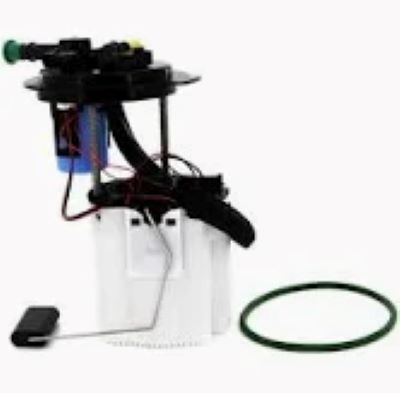In the spec sheet of any fuel pump the first thing people will ask about is then flow rate. Fuel pumps are often rated in liters-per-hour (LPH) and typical fuel pump ratings fall between 255 LPH and 450 LPH. Inventory the power your engine makes, add a minimum of 15% to it and you have the window through which you must work with as far as fuel pump.Let's say you ended up at around 500 horsepower. In that ball park, a 255 LPH pump will get the job done. Once you know the flow rate required by your vehicle's engine, this will allow for accurate fuel delivery and also avoid overloading the system.
Another important parameter is voltage. The standard fuel pump is intended to run on 12 volts, although there can be different designs, notably a high-performance version that may need around 13.5 or 16 volts in order to deliver the maximum performance. Running a pump outside its voltage range means lower efficiency: up to 15% and a reduction of lifetime. To avoid fire or damage, always ensure the vehicle electrical system is of the same voltage requirement as the pump.
A pressure rating, which is usually expressed in PSI (pounds per square inch), refers to the maximum fuel pressure a pump can withstand. Modern fuel-injected engines require pumps that can handle from 40 to 100 PSI. Incorrectly matching the pressure to your vehicle can lead to fuel starvation — insufficient or stalling engine performance.
Although in 2021, when a performance shop damaged their just received fleet due to incorrect fuel pump pressure ratings (25% less fuel efficiency) This straightforward example demonstrates how the pressure requirements must be considered when sizing a pump.

In the words of Henry Ford, who said it best: “Quality means doing it right when no one is looking. And that goes for fuel pump specs. Inlet and outlet sizes, commonly in inches; 3/8 inch or 1/2 inch - checking to make sure it works with your vehicle fuel lines. Incorrect sizepressure drops can be as much as 10 per cent (see table) a means the pump Does Wot so good(convert this into English)
Conclusion Regarding the Pump Operating Temperature Range If you are still wondering if it is important to check the operating temperature range of a pump – yes. This prevents overheating and mechanical stress because the pump operates within its temperature range, typically between -40°C and 60°C. Due to temperature variation (extremely high or below any percentage), the pump life may decrease from 30% to failure, forcing an early change.
Fuel Pump offers a collection of all the specification sheets, which can be valuable to those in need of guidance and could help make an informed decision towards your vehicle. Knowing these major principle numbers will keep the system running smooth and save you costly repairs.